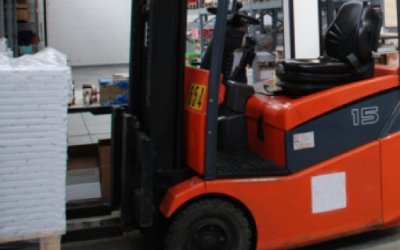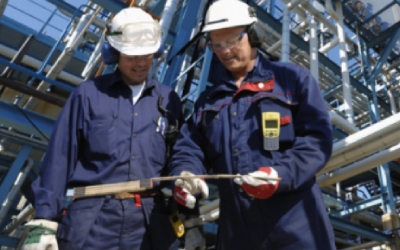A recent WorkSafe WA report has found that the top 20 workplace hazards have led to 25,000 years of lost time over the period of a decade. Manual handling was the worst hazard group by total time lost from work, accounting for 40 per cent of all lost time, while “trips on clear ground” was the worst hazard, with 4300 years lost and 17,800 claims at a cost of $700 million.
It is important not to pretend that there is zero risk of an adverse outcome when it comes to managing and minimising risk, unless there is actually no exposure to the hazard that creates a risk, according to an academic expert in OHS risk management.
SafeWork SA recently issued a safety alert following a recent near miss that highlighted the dangers of using unsecured lifting jibs on forklifts. A worker narrowly escaped being hit by a load of steel when the lifting jib, which was incorrectly attached to the tynes of a forklift, slipped off and landed on adjacent machinery causing damage.
Engagement is one of the key challenges that safety teams experience, with recent research finding that it is one of the weakest pillars of the safety experience for workers. The engagement challenge is twofold when it comes to safety – particularly in high-risk industries like mining, manufacturing, construction, utilities and logistics, said Jess Daly, chief strategy officer for professional services firm Everyday Massive.
A five-day workweek for construction workers can reduce stress and improve worker wellbeing, with minimal perceived impact on productivity, according to a new report. Construction workers typically work six days a week, but research tracking a five-day workweek in the industry has demonstrated a number of significant benefits while reducing risks commonly associated with the industry.
There are a number of early intervention strategies that are likely to improve return to work outcomes for workers, employers and insurers, according to a new report. While there is a high level of understanding and belief in the importance of early intervention to improve work outcomes for injured and ill workers, the report found more can be done to improve the effectiveness of early intervention in return to work programs.
Explore Safetywear Direct for certified gloves and safety wear uniforms. Ensure workplace safety and compliance. Request a quote now!
There are a number of important issues and trends in workplace safety offences and fines for both companies and individuals, according to the Victorian Sentencing Advisory Council. The vast majority of defendants sentenced for OHS offences in the state were companies (83 per cent), and of the 200 individuals sentenced, the large majority of individual defendants were male (97 per cent) and only six of them were women, said Dr Paul McGorrery, CEO of the Victorian Sentencing Advisory Council.
There has been a strong start to 2024 for the national HSE job market, with a 12.5 per cent increase in contracting opportunities and high demand for senior-level HSE professionals, according to recent research. While there was an expected seasonal slowdown over the Christmas period, employers began their hiring processes much earlier than usual after the break.
One of the most significant barriers to psychosocial risk management is the competing interests of human resources and OHS around worker consultation, according to an expert in the area. For HR, the employee engagement or culture survey is the function’s primary way of understanding employee commitment and productivity drivers, and HR can be reluctant to add in new surveys to assess psychosocial risk, said Jason van Schie, managing director of psychological health and safety consultancy Flourish Dx.





















































